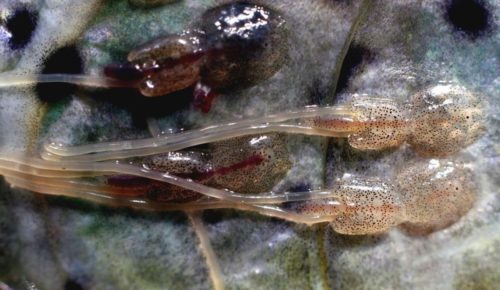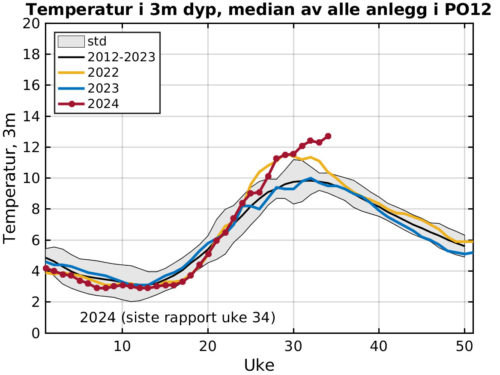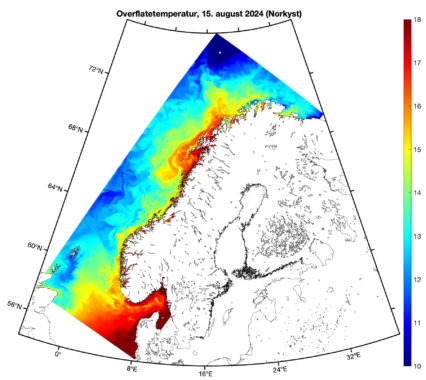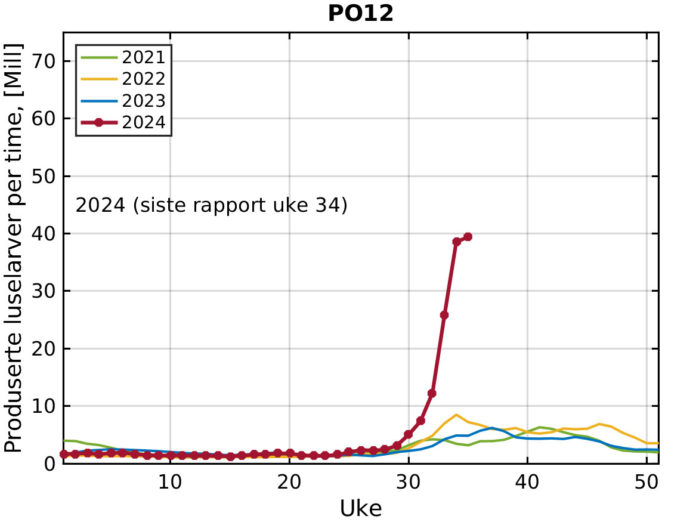Sea lice numbers in Northern Norway has reached unprecedented levels, according to marine scientist Anne Sandvik.
“Sea lice production has never been higher in the north than it is now,” Sandvik said in a press release on Thursday, referencing data she gathers weekly from salmon farmers on the prevalence of sea lice on farmed fish.
This information is used to estimate how much sea lice larvae is being released from farms and how ocean currents carry them before they become infectious and attach to fish.
“In the north, we saw an explosive increase in sea lice larvae this summer,” Sandvik reported.

Data collected in Production Area 12, located in Vest-Finnmark, shows a sharp rise in sea lice larvae from week 30 to 34, coinciding with higher-than-usual sea temperatures.
Impact on Trout and Char
The timing of the increase suggests that sea trout and Arctic char may be particularly vulnerable to sea lice infestations. While salmon tend to swim out to sea in early summer, sea trout and Arctic char remain in fjords and coastal areas for longer periods, putting them at greater risk.
“The risk of sea trout becoming infested with harmful levels of lice has increased in recent weeks,” Sandvik explained, citing the rise in adult female lice on farmed fish.
In week 30, for example, there were more than double the number of adult female lice on farmed fish in Production Area 8 compared to the same time in 2023.
Temperature to Blame
The significant rise in sea lice in the north is likely due to the unusually high sea temperatures this summer, according to Sandvik. “Higher sea temperatures have created optimal conditions for lice, speeding up their life cycle and increasing their ability to attach to fish,” she said.

At one of the temperature monitoring stations in Eggum, Lofoten, sea temperatures reached 16.85 degrees Celsius in August, compared to the usual 12-13 degrees Celsius.
Increased Lice Production at Fish Farms
While sea lice occur naturally in the ocean, the majority of sea lice now come from salmon farms. In northern Norway, this year has seen record levels of lice production.
For example, in a single fish pen containing 100,000 to 200,000 fish, each with an average of 0.5 adult female lice, the number of adult female lice could range from 50,000 to 100,000 before treatment is required. Many farms have reported an increase in adult female lice in recent weeks, with Production Area 12 showing four times the number of lice compared to previous years.

Southern Norway Less Affected
In southern Norway, sea temperatures have remained more typical throughout the summer. While the overall number of adult female lice is as high or higher than in the north, it is not higher than in recent years.
As the situation continues to evolve, authorities will continue to monitor and manage the spread of sea lice to protect both farmed and wild fish populations.


